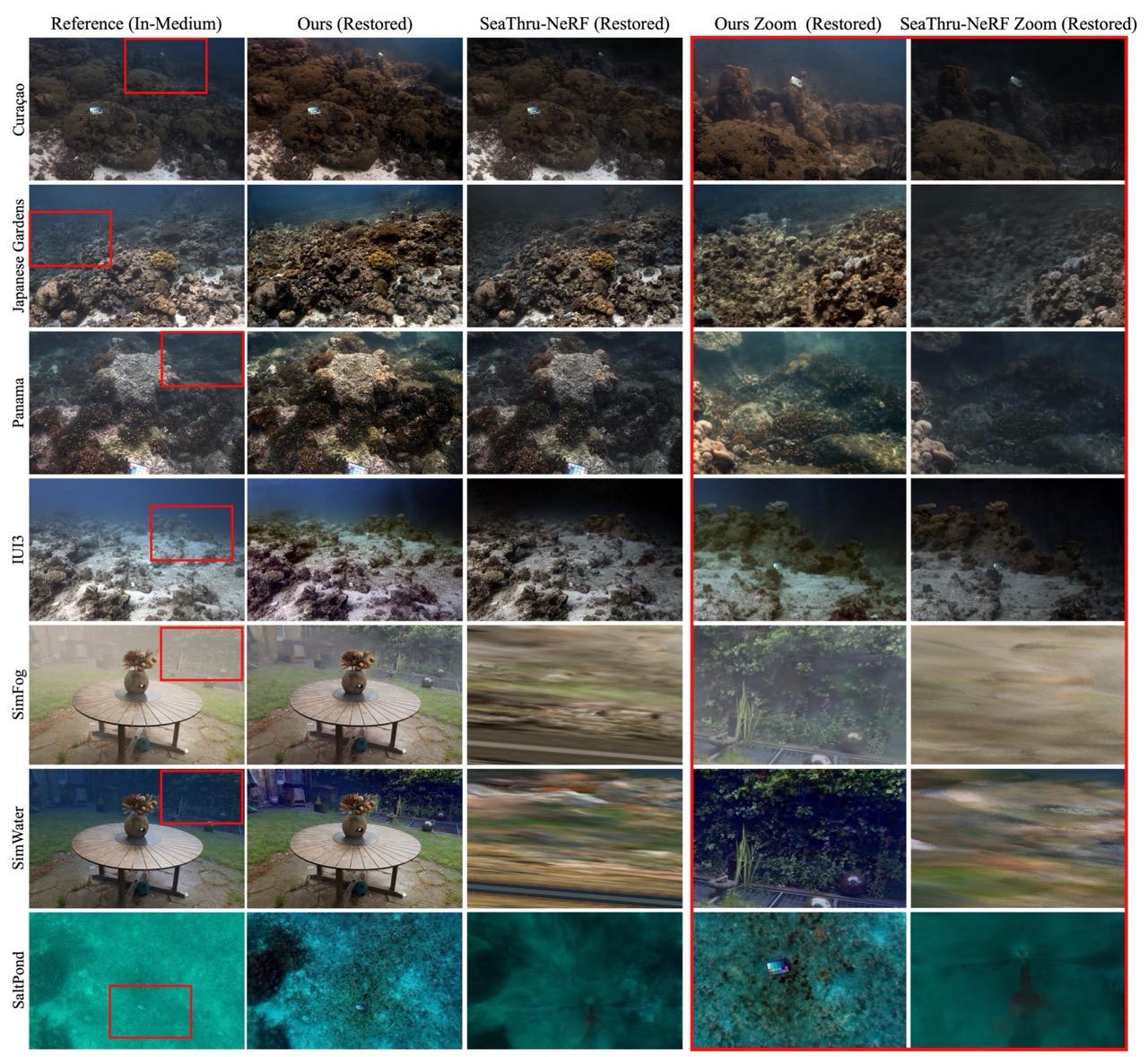AI Summary
MIT and WHOI researchers have developed SeaSplat, a novel technology that overcomes the significant challenges of underwater imaging by combining a sophisticated color-correcting algorithm with 3D Gaussian splatting. This allows for the creation of accurate, true-color 3D models of underwater environments, effectively "removing the water" to reveal what would truly be seen. SeaSplat holds immense potential for marine science, enabling more precise monitoring of ecosystems like coral reefs and improving our ability to assess marine health, and is more efficient than previous methods.
Anyone who has ever snorkeled or scuba dived knows that the underwater world looks vastly different than what appears in most nature documentaries. Colors fade and blur with distance, and everything takes on a bluish-green tinge. This isn't just disappointing for vacation photos—it's a genuine scientific problem. Marine biologists and oceanographers struggle to accurately assess the health of underwater ecosystems when water itself distorts what they see.
Now, researchers from MIT and the Woods Hole Oceanographic Institution (WHOI) have developed a solution called
SeaSplat that could transform how we visualize and study our oceans.
What Water Does to Images
Water is a far denser medium than air, which creates significant challenges for underwater imaging. Two main optical effects distort underwater photography: backscatter and attenuation.
Backscatter occurs when light bounces off tiny particles suspended in water, creating a hazy veil effect. Think of how headlights look in fog—that's similar to what happens underwater, but constantly and everywhere.
Attenuation is even more problematic. As light travels through water, certain wavelengths fade faster than others. Red light disappears first, which is why underwater photos often appear predominantly blue or green, even when colorful coral or fish are present.
"One dream of underwater robotic vision that we have is: Imagine if you could remove all the water in the ocean. What would you see?" says John Leonard, professor of mechanical engineering at MIT and one of the researchers behind SeaSplat.
How SeaSplat Works
SeaSplat combines two cutting-edge technologies to solve these underwater imaging problems. First, it employs a sophisticated color-correcting algorithm that calculates how much each pixel in an image has been distorted by water's optical effects. The system then removes these distortions, revealing the true colors of underwater scenes.
Second, SeaSplat integrates this color correction with a technique called 3D Gaussian splatting (3DGS), which can stitch multiple images of a scene together into a complete three-dimensional representation.
The name "SeaSplat" references both its underwater application and this 3DGS method, which has previously been successful only in air-based environments. What makes SeaSplat revolutionary is that it adapts these techniques to work underwater, where color changes dramatically depending on distance and angle.
"With SeaSplat, it can model explicitly what the water is doing, and as a result it can in some ways remove the water, and produces better 3D models of an underwater scene," explains MIT graduate student Daniel Yang, one of the developers.
Real-World Applications
The implications for marine science are significant. Coral reef monitoring offers a prime example of how this technology could be applied.
"Bleaching looks white from close up, but could appear blue and hazy from far away, and you might not be able to detect it," says Yogesh Girdhar, an associate scientist at WHOI. "Coral bleaching, and different coral species, could be easier to detect with SeaSplat imagery, to get the true colors in the ocean." The research team has already tested SeaSplat on images from diverse underwater locations:
- The Red Sea
- The Caribbean near Curaçao
- The Pacific Ocean near Panama
- The U.S. Virgin Islands (using a remote-controlled underwater robot)
In each case, SeaSplat generated a true-color 3D world that researchers could explore virtually—zooming in and out, viewing features from different angles, all while maintaining accurate colors regardless of perspective.
What makes SeaSplat particularly innovative is how it constrains the 3D Gaussian Splatting process with a "physically grounded underwater image formation model." In simpler terms, the system understands the physics of how light behaves underwater and uses that knowledge to correct distortions.
This approach isn't just about making prettier pictures. The team's research paper indicates that SeaSplat produces better depth maps of scenes, meaning it more accurately captures the actual structure and distances of underwater environments.
The system simultaneously learns the parameters of the underwater medium (how clear or murky the water is, how light is being affected) while building a 3D representation of what's being photographed. This dual learning process means both the color correction and the spatial accuracy improve together.
Advantages Over Previous Methods
Previous attempts at underwater color correction, such as a method called
Sea-Thru, have shown promise but required enormous computational resources. This made them impractical for producing 3D models or for real-time applications.
Unlike these earlier approaches, SeaSplat is designed for speed as well as accuracy. "This is the first approach that can very quickly build high-quality 3D models with accurate colors, underwater, and it can create them and render them fast," notes Girdhar.
This efficiency doesn't come at the expense of scientific validity. SeaSplat is built on a physically grounded model of how light behaves underwater, rather than just applying aesthetic corrections that might look good but aren't necessarily accurate.
Despite its advantages, SeaSplat isn't quite ready for widespread deployment on autonomous underwater vehicles. The computing resources required—currently a desktop computer—are too bulky to fit aboard most underwater robots.
However, the system could work well with tethered operations, where underwater vehicles connected to ships can send images up to shipboard computers for processing. As computing technology continues to miniaturize and become more efficient, fully autonomous applications may become feasible in the future.
The Future of Underwater Imaging
The MIT-WHOI team will present their research on SeaSplat at the IEEE International Conference on Robotics and Automation (ICRA), where it's likely to generate significant interest among roboticists and marine scientists alike.
Looking ahead, SeaSplat could transform how we study and monitor marine environments. Marine biologists could virtually "fly" through accurate 3D models of coral reefs to assess their health over time. Conservation efforts could benefit from more precise identification of different species and their conditions. Underwater archaeology might become more accessible, with artifacts visible in their true colors.
Research Paper:
SeaSplat: Representing Underwater Scenes with 3D Gaussian Splatting and a Physically Grounded Image Formation ModelRecent Posts














